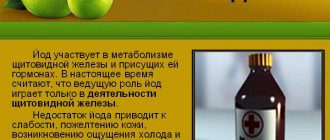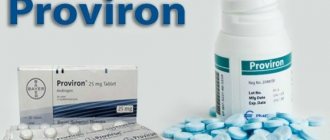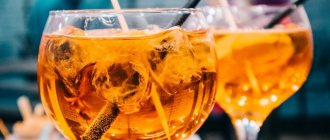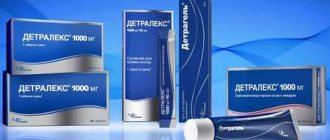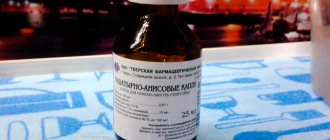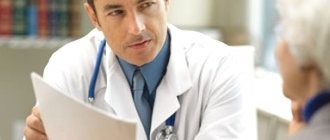Glycine is a metabolic drug and is used to treat neuroses, depression, and alcohol addiction. The amino acid present in the body calms, stimulates brain activity, promotes concentration, and improves sleep. To get the maximum result from the medicine, you need to take into account the presence of contraindications and know how many glycine tablets you can take per day. This information is indicated in the annotation included in the package. However, there are certain application features that deserve special mention.
Now Foods, Glycine, Pure Powder, 454 g
★★★★☆
1 222 ₽
Buy at a discount
pharmachologic effect
The main substance of the drug is a non-essential amino acid. It is a mediator of nervous excitation. Thanks to its composition, Glycine has a sedative effect, improves metabolic processes in brain tissue, and increases the body's resistance to various damaging factors, including hypoxia.
Pharmacodynamics
Glycine is a regulator of metabolic processes. The drug increases brain activity and relieves the severity of symptoms of psycho-emotional stress. The drug normalizes sleep, improves mood, and alleviates the symptoms of menopause. Glycine is used as part of complex therapy to treat withdrawal symptoms. The drug reduces the severity of the consequences of traumatic brain injuries and cerebrovascular accidents.
Pharmacokinetics
Glycine penetrates into most biological fluids of the body. As a result of the metabolism of the drug, water and carbon dioxide are formed. Therefore, Glycine does not accumulate in tissues.
Special case
It is best to read the manufacturer’s instructions on how to take Glycine Bio tablets for an adult. This also applies to some other types of the drug. The fact is that not only pure aminoacetic acid is available for sale, but also improved by the inclusion of vitamin and mineral complexes.
For such products, the manufacturer develops a unique use program, which is described in the accompanying documentation. You will have to follow both the rules regarding the use of the pill and the recommendations on the frequency of dosing and the duration of the radiation program.
The instructions on how to take “Glycine Forte” in tablets for adults are of quite great interest to the general public. This drug is popular because half of the weight of each tablet is vitamins that are beneficial to humans. The manufacturer recommends using one capsule three times a day. This program is suitable if you are worried about irritability.
An increase in dosage may be recommended by the attending physician if no positive effect is observed with the current course. Much depends on the specific case, the diagnosed pathology, and the general condition of the sick person’s body.
Indications for use
The main indications for the use of Glycine include:
- prolonged psycho-emotional stress;
- decreased memory and attention;
- consequences of ischemic or hemorrhagic stroke;
- insomnia;
- neuroses;
- encephalopathy of any origin;
- treatment of withdrawal syndrome (hangover) due to alcohol intoxication;
- vegetative-vascular dystonia;
- relief of clinical symptoms during menopause;
- tension headache and dizziness;
- complex therapy of arterial hypertension.
The use of Glycine during breastfeeding is permitted under strict indications and under medical supervision.
The drug is used sublingually (under the tongue) or buccally (between the upper lip and gum). The dosage of the drug is 100 mg. Glycine is prescribed 1 tablet 2-3 times a day. Before using the drug, it is recommended to consult a doctor to determine the required dose, frequency of administration and course duration.
Goodbye bad habit
The drug in question has a positive effect when it is necessary to give up alcohol, weakening the withdrawal syndrome. If it is determined that the central nervous system and PNS are affected, the tablet should be used up to three times daily. The duration of the program is two weeks, but can be doubled. After this, they take a month's break, after which this circle can be repeated.
The doctor will tell you how to take “Glycine” tablets for an adult to make the process of quitting alcohol, which is accompanied by an acute stressful situation, easier. If this condition occurs rarely, when it occurs, use two tablets at a time. If a person breaks into a binge, one tablet must be dissolved under the tongue, repeat this action after half an hour and another hour later.
If a patient with alcoholism is unable to dissolve tablets on his own, the drug can be used in powder form. The dose is repeated up to 4 times daily. Before providing first aid, you should consult with a narcologist, and only then use Glycine.
Glycine overdose
Symptoms of a Glycine overdose occur when the drug is taken incorrectly, as well as when it is consumed simultaneously with alcoholic beverages. In order for signs of drug intoxication to appear, a single dose of 15-20 tablets of the drug is required. The main manifestations of overdose include:
- drowsiness;
- dizziness;
- loss of consciousness;
- vomit;
- nausea;
- stool instability;
- dry mouth;
- sopor;
- bronchospasm;
- anaphylactic shock.
First aid before the doctor arrives is to lavage the stomach. To do this, you need to drink 1.5 -2 liters of water and press on the root of the tongue. If the medicine was taken a long time ago, then in order to alleviate the condition, it is recommended to drink an absorbent drug. Severe forms of Glycine overdose require immediate hospitalization. In the hospital, the severity of the condition is determined and appropriate detoxification therapy is carried out.
Possible consequences of increasing dosage
There are no known cases of glycine overdose. But they are possible. If you take too many tablets, adverse reactions will occur:
- allergy;
- feeling tired, lethargic, apathy;
- drowsiness;
- state of psychosis;
- headache;
- irritability, aggression.
If the medication is intolerant, schizoid disorders, epileptic seizures, and convulsions may develop. If an adult patient suffers from hypotension, his blood pressure will drop and a headache will appear.
Interaction
The effect of taking Glycine largely depends on what medications it interacts with. The combined use of Glycine with sedatives of herbal origin is permitted. This combination is used in the complex treatment of anxiety disorders and sleep disorders.
The interaction of Glycine with other nootropic drugs leads to an increased sedative effect. The combined use of these drugs is acceptable.
When Glycine is prescribed simultaneously with drugs from the tranquilizer group, the inhibition of the central nervous system is additive. This combination of drugs is acceptable in the treatment of neuroses, sleep disorders, and psycho-emotional disorders. Dosages are determined by the attending physician based on the disease and the severity of its condition.
The combined use of Glycine with neuroleptics, antidepressants and anticonvulsants reduces the severity of their side effects.
Minimum of initiative
You should not decide on your own how to take Glycine tablets for an adult. The instructions for use, of course, are quite detailed, contain a lot of useful information, give a complete understanding of the rules for using the medication, however, even with such a universal drug you can harm yourself if you use it thoughtlessly and uncontrollably.
Another danger of taking it without a doctor’s prescription is the possibility of starting a disease, the treatment of which must be started now. “Glycine,” for example, can stop the symptoms of the initial stage, when it is easiest to cope with the problem, and when it cannot cope with the manifestations and the patient nevertheless goes to the doctor, it turns out that the situation has grown to significant proportions and requires a long, complex, expensive course of treatment.
Therefore, experts strongly recommend: “Glycine” should be used only as prescribed by a doctor during a preliminary assessment of a person’s condition and identification of the causes of disturbing symptoms.
At the appointment, the doctor explains in detail how to take “Glycine” in tablets for an adult according to the instructions and why this drug is prescribed. The specialist selects the optimal course duration: from two weeks to a month.
Glycine analogs
In cases where the use of Glycine is impossible for some reason, it is recommended to replace it with drugs with similar effects. These include Afobazol, Tenoten, Noopept, Valerian, Mexidol, Picamilon, Ginkum, Piracetam, Novopassit, Divaza, Eltacin.
Which is better: Glycine or Afobazole?
Afobazole is an anxiolytic drug. The drug reduces the manifestations of anxiety syndrome and normalizes sleep. The active ingredient Afobazole is morpholinoethylthioethoxybenzimidazole dihydrochloride. Despite the fact that the drug was specially developed to reduce the excitability of the nervous system, it does not have a hypersedative effect. Taking Afobazole does not cause drowsiness or reduce concentration. Indications for taking Afobazole include:
- sleep disorders;
- increased anxiety;
- irritability;
- various diseases, including systemic lupus erythematosus, cerebrovascular disease, dementia of various origins, irritable bowel syndrome and other somatic pathologies;
- premenstrual syndrome;
- the need to remove alcohol and nicotine from the body.
Afobazole and Glycine have a similar mechanism of action. Both drugs are available in tablet form. Afobazole is taken with a sufficient amount of water, and Glycine is placed under the tongue. The differences between drugs lie in the active ingredients. Afobazole is a chemical, Glycine is an amino acid natural to the brain. Therefore, taking Glycine is allowed during pregnancy, unlike Afobazole. To enhance the effect of treating anxiety disorders, co-prescription of medications is indicated.
Which is better: Glycine or Tenoten?
Tenoten is a nootropic drug. It has antiamnestic, antidepressant, antiasthenic, antihypoxic and neuroprotective effects. The active substance of Tenoten is affinity purified antibodies to the brain-specific protein S-100. The main indications for the use of the drug include:
- stress;
- neuroses and neurosis-like conditions;
- memory impairment;
- emotional lability;
- encephalopathy;
- organic diseases of the central nervous system.
Glycine and Tenoten belong to the group of nootropic and anxiolytic drugs. Their action is aimed at activating brain activity. The drugs are available in the form of tablets that are taken sublingually. Tenoten is indicated for increased psycho-emotional tension. To improve memory and attention, it is better to choose Glycine. This drug is also suitable for use during pregnancy. Taking medications together is indicated when prescribing complex therapy.
Which is better: Glycine or Noopept?
Another representative of the group of nootropic drugs is Noopept. The drug has a neuroprotective, antioxidant and vegetative-normalizing effect. The active substance of the drug is N-phenylacetyl-L-prolylglycine ethyl ester. Increases the resistance of brain tissue to various damages. With the development of ischemic stroke, Noopept is prescribed to reduce the volume of the lesion. The drug improves the rheological properties of blood, restores memory and cognitive functions of the brain. Indications for prescribing Noopept are:
- memory and attention disorder;
- cerebrovascular accident;
- encephalopathy;
- recovery period after being in a coma;
- consequences of traumatic brain injury.
Glycine and Noopept help improve brain activity and restore memory. Both drugs are available in tablet form. Glycine is used sublingually. Noopept tablets are taken orally with enough water.
Which is better: Glycine or Valerian?
Valerian is a sedative of plant origin. Has a sedative and antispasmodic effect. The active ingredients of the drug are isovaleric acid and borneol ester. Thanks to its properties, the drug helps normalize sleep and stool, reduces the severity of spasms, and improves cardiac activity. Taking Valerian reduces the risk of migraines and epileptic seizures.
The main indications for taking Valerian include:
- sleep disturbance;
- tachycardia of any origin;
- emotional lability;
- neurodermatitis;
- migraine-type headache;
- complex therapy of arterial hypertension;
- menopause;
- increased gas formation;
- constipation;
- epilepsy attacks.
Valerian has restrictions on its use. These include the first trimester of pregnancy, individual intolerance to the components of the drug, depression and low blood pressure. Valerian and Glycine normalize sleep and reduce the severity of anxiety. One of the differences between the drugs is their composition. The active component of Glycine is an amino acid, Valerian is a completely herbal preparation. Taking Valerian can be accompanied by a large number of side effects. Before using medications, it is recommended to consult a doctor. The specialist will conduct the necessary diagnostics and, based on the results obtained, choose a medicine.
Which is better: Glycine or Mexidol?
Mexidol is an antioxidant drug. The active substance of the drug is ethylmethylhydroxypyridine succinate. Mexidol increases the body's resistance to various damaging factors, helps normalize blood microcirculation in the brain, and reduces the severity of alcohol intoxication. The drug improves the rheological properties of blood, stabilizes the processes of wakefulness and sleep. Indications for prescribing Mexidol are:
- consequences of traumatic brain injury;
- neuroses and neurosis-like conditions;
- withdrawal syndrome;
- vegetative dystonia;
- cardiac ischemia;
- cerebrovascular pathology;
- cognitive impairment;
- consequences of acute cerebrovascular accidents.
Glycine and Mexidol have a sedative and nootropic effect. Helps normalize brain activity, restore sleep and reduce the severity of anxiety. The differences between the drugs are in the form of release, active substances and additional properties. Glycine is produced in the form of tablets for oral administration. Mexidol is available in the form of tablets, injection solution and toothpaste. Glycine contains an amino acid that is natural to the brain. The active substance of Mexidol is ethylmethylhydroxypyridine succinate.
Which is better: Glycine or Picamilon?
Picamilon is a drug from the nootropic group. It has an antioxidant, vasodilator and sedative effect. The active substance of the drug is nicotinoyl gamma-aminobutyric acid. Picamilon improves the processes of memory, thinking and attention. Thanks to its sedative effect, the medicine helps reduce the severity of anxiety and normalize sleep. Indications for the use of Picamilon are:
- diseases of the brain of vascular, inflammatory or traumatic origin;
- depression;
- consequences of alcohol abuse;
- migraine-type headache;
- excessive mental and physical stress;
- prolonged stress;
- conditions accompanied by nervous exhaustion;
- open angle glaucoma.
Unlike Glycine, Picamilon has a more pronounced effect. However, its side effects appear much more often and to a greater extent. Glycine has a gradual effect, noticeable after a course of administration. The combined use of drugs is allowed. They complement each other's action. This combination of drugs is actively used by doctors for adolescents during periods of mental overload.
Which is better: Glycine or Ginkoum?
Ginkoum is a sedative of plant origin. The active substance of the drug is ginkgo biloba extract. The action of Ginkoum is associated with improved blood microcirculation in the brain and a positive effect on memory. A course of taking the drug has an antioxidant effect, reducing the risk of developing cancer. The main indications for the use of the drug are:
- cerebrovascular accident;
- dizziness;
- noise in ears;
- cerebrovascular diseases;
- weakness, increased fatigue;
- migraine-type headache;
- high blood pressure;
- encephalopathy of various origins;
- a condition caused by brain hypoxia.
Glycine and Ginkoum are nootropic drugs of plant origin. The range of their actions and indications is largely similar. Glycine is available in tablet form. Ginkoum is produced in the form of capsules for oral administration. The drugs are well tolerated. Before use, it is recommended to consult a doctor to determine the dosage, frequency of administration and course duration.
Which is better: Glycine or Piracetam?
Piracetam is a nootropic drug. It is a cyclic derivative of gamma-aminobutyric acid. The active ingredient of the drug is piracetam. Thanks to its properties, the drug increases the body’s resistance to various toxic substances, minimizes the risk of developing seizures, helps improve the functional activity of the brain, and activates its metabolic processes. The main indications for the use of Piracetam include:
- memory impairments of various origins;
- dementia;
- cortical myoclonus;
- cerebrovascular accidents;
- complex therapy of alcohol intoxication;
- chronic fatigue;
- coma;
- neurasthenia.
Both drugs have a nootropic effect. Glycine is produced in the form of tablets for oral administration. Piracetam is produced in the form of tablets and solution for injection.
Which is better: Glycine or Novopassit?
Novopassit is one of the sedative medicines based on herbal components. The drug has no anti-anxiety and sedative effect. Novopassit helps reduce the severity of anxiety, normalizes sleep, and eliminates tension headaches. Due to its properties, the drug is used to relieve premenstrual syndrome and menopausal symptoms. Novopassit is prescribed for the following conditions:
- migraine;
- conditions accompanied by constant nervous tension;
- neuroses and neurosis-like conditions;
- tension headache;
- sleep disturbance;
- menopause;
- psychogenic itching;
- irritable bowel syndrome.
Both drugs affect the central nervous system. They have a minimal number of contraindications. Novopassit is available in the form of tablets and solution for oral administration. Glycine is produced in the form of tablets for sublingual use. Novopassit contains plant components in combination with semi-synthetic guaifenesin. Glycine is an amino acid that is naturally found in the brain.
Which is better: Glycine or Divaza?
A representative of the group of nootropic drugs is Divaza. The drug has neuroprotective, anxiolytic, antidepressant, antioxidant, neurometabolic and sedative effects. Divaza helps to increase the brain's resistance to the effects of toxic substances, as well as to hypoxia. The medication improves cerebral circulation, memory, thinking and attention. The active ingredients of the drug are antibodies to the brain-specific protein S-100 and antibodies to endothelial NO synthase. Indications for the use of Divaza include:
- ischemic stroke;
- memory and attention disorder;
- emotional lability;
- consequences of traumatic brain injury;
- symptoms of vegetative-vascular dystonia;
- neuroinfections;
- long-term stress loads.
Divaza and Glycine are used to improve brain activity, stabilize the emotional background, and restore cognitive functions of the brain. The differences between the drugs lie in the mechanisms of action and active substances. Divaza contains antibodies to the brain-specific protein S-100 and antibodies to endothelial NO synthase. Glycine is a naturally occurring amino acid in the brain. Divaza promotes the regeneration of brain cells, increases the speed of transmission of nerve impulses and improves memory. Glycine reduces the excitability of brain cells, normalizes sleep and restores memory. Taking Divaza is contraindicated for persons under 18 years of age. Glycine is approved for use from school age.
Which is better: Glycine or Eltacin?
Eltacin is an antioxidant combination drug. The drug contains glycine, L-glutamic acid and L-cysteine. Eltacin helps normalize metabolic processes in the body, increases its resistance to negative factors and hypoxia, increases endurance and shortens the recovery period after intense physical activity. Indications for prescribing the drug are:
- autonomic dysfunction;
- chronic overexertion;
- alcohol intoxication;
- chronic heart failure;
- recovery after prolonged physical activity.
Glycine and Eltacin have a similar composition, mechanism of action and effects. Thanks to the enhanced composition, Eltacin has more pronounced properties. Concomitant use of drugs is prohibited. This is due to the possibility of glycine overdose. The dosage, frequency of administration and duration of the course should be determined by the doctor.
What is it about?
It is common to think that you can learn how to take glycine tablets for adults and children from the instructions, and no more information or contact with specialists is required, since this is the safest medicine in our pharmacies from the sedative category. However, it is really difficult to argue with this opinion. The composition is often prescribed to children suffering from increased activity and irritability. It helps adults in difficult stressful situations.
If you know how to take glycine tablets for an adult (100 mg is the classic dosage of drugs available in pharmacies), you can maintain normal brain function in old age. The active substances of the drug stimulate metabolic processes. Some believe that this is the best universal medicine suitable for the whole family. Its basis is aminoacetic acid, slightly sweet, which gives the product its name: glycys translates as “sweet”.
Glycine during pregnancy and lactation
There are still no studies confirming the absolute safety of the drug for pregnant women. Therefore, its use during pregnancy is strictly indicated when indicated and under the supervision of a doctor. The dosage of the drug is selected individually based on the characteristics of the woman’s body.
The use of Glycine during lactation is permitted. The drug has a mild effect on the body. A small amount of the medicine passes into breast milk. The permitted dosage is selected individually for each woman.
How long?
The instructions for the drug describe in detail how to take “Glycine” in tablets for an adult, and the doctor will tell you at the appointment how long the course of treatment is required. It is generally accepted that the product is safe, therefore it does not cause complications or adverse reactions, with the exception of persons with individual intolerance.
The duration of the course usually varies from two weeks to a month, after which a month's break is required. Then you can take the same course again if there is a doctor’s recommendation. Despite the safety of the medication, you should not abuse it. Although the instructions indicate how to take Glycine tablets for an adult, it is better to first consult a doctor in case of possible recommendations to deviate from the generally accepted program.
How to buy?
"Glycine" is sold in almost any modern pharmacy. The product is inexpensive, usually around 50 rubles, sometimes a little more, up to a hundred. To purchase it you do not need to present a prescription; you can buy as much as you need at any convenient time. The tablets are packaged in plastic blisters, sealed in a cardboard box.
Instructions for use must be included. Also on the packaging there is a complete list of components used in the production process of the drug. It should be studied by a person who knows his body is intolerant to any substance used in the pharmaceutical industry.
As a rule, in the production of “Glycine” the active component itself is used, as well as water-soluble cellulose and magnesium stearate. It is believed that the product is practically not counterfeited, so you can buy it in a licensed pharmacy without fear for the quality of the product.
Usually one pack contains fifty tablets for lozenges under the tongue. If you need to use the drug in powder, you can take tablets that can be easily crushed at home without much difficulty (for example, with a teaspoon).
What to be afraid of?
It is believed that “Glycine” is completely safe for humans. An overdose of this medication is impossible, since the active compound, even in high concentrations, is not dangerous to health. This is due to the ability of the liver to deactivate an excess of aminoacetic acid in the tissues of the body, while carbon dioxide and water are formed. At the same time, it is noted that an excess of this component provokes drowsiness, a general lethargic state, and at the same time blood pressure decreases.
Extensive clinical trials conducted by several medical institutions have not been able to establish the side effects of the drug. Currently, the official position is as follows: “Glycine” is well accepted by patients of any age. The exception is individual intolerance, hypersensitivity to the components of the product. No contraindications to the use of the drug could be identified.
Features of use
Many people are interested in how to take “Glycine” tablets for an adult: before meals or after? The instructions for the drug contain clear instructions on the optimal norms: the product is intended for use half an hour after a meal. This is due to the characteristics of the active substance: aminoacetic acid can cause stomach problems if the medication is used on an empty stomach.
Patients suffering from gastritis and peptic ulcers should be the most careful. In childhood, glycine is intended for therapy strictly in the volume and duration of the course as recommended by the attending physician. It is believed that the medication is not addictive, however, it is important to adhere to the established rules.
Reviews
Most patients who took the drug on the recommendation of a doctor give positive reviews about it. Here are some reviews:
Anna K. They prescribed me medicine for insomnia. I drank it at night. An hour later, for the first time, I began to feel dizzy after dissolving the tablet. Then this effect went away. I sleep well now.
Ivan P. I started taking the medicine on the advice of a friend, but I didn’t know that it couldn’t raise blood pressure, only lower it. And for me it’s already below average. I ended up in the hospital, where the doctors scolded me. I do not advise people with low or normal blood pressure to take it.
Alexey V. I was treated with it for about three weeks. The benefits were obvious. But the doctor warned that it should not be taken continuously for a long time. He won't help then. I try to follow the doctor's recommendations. The medicine helps to lower blood pressure during stress.
Some technical aspects
When it enters the human body, “Glycine” normalizes metabolism, affecting the production of hormones. This is especially noticeable in the concentration of adrenaline in the blood, since aminoacetic acid blocks its generation by tissues. At the same time, toxins and free radicals that can negatively affect the brain are eliminated.
Regular use of the drug in accordance with the instructions for use allows you to achieve quality sleep and improve your standard of living, efficiency and performance in everyday life, as well as adapt to a new social environment.
Why should you take it?
The drug helps solve numerous health problems. You should know what glycine helps with in order to use it correctly. It can be taken for:
- improving brain activity;
- acceleration of metabolism;
- reducing nervous tension;
- strengthening and normalizing sleep;
- relief of general condition;
- improving mood, increasing calmness;
- removing the negative effects of alcohol on the body;
- reducing symptoms of vascular and intracranial dystonia;
- reducing nervous tension after a stroke or with the onset of menopause in women;
- adaptation of a person in a team.
The drug belongs to nootropics (means for activating brain activity). It affects memory and reduces muscle tone. The benefits of glycine in this case are obvious, especially when used together with other means.
Magic in real life
It so happened that aminoacetic acids were nicknamed magical in the scientific community, and all because of their unique effect on the human body. "Glycine" belongs to the class of nootropics and is the safest representative of this group of medications. It is a neurotransmitter that stimulates brain function. Under the influence of the drug, mental activity is activated. This is due to the effect on glutamate receptors, the effect on GABA and the glycinergic result of use.
Aminoacetic acid is a natural antioxidant that fights poisoning of body tissues and has alpha-andrenoblocking properties. This influence activates a person’s thought processes, reduces stress on the psyche, calms emotions, weakens aggressiveness and the tendency to conflict. The brain is to some extent protected from the negative effects of medications and alcoholic beverages.

